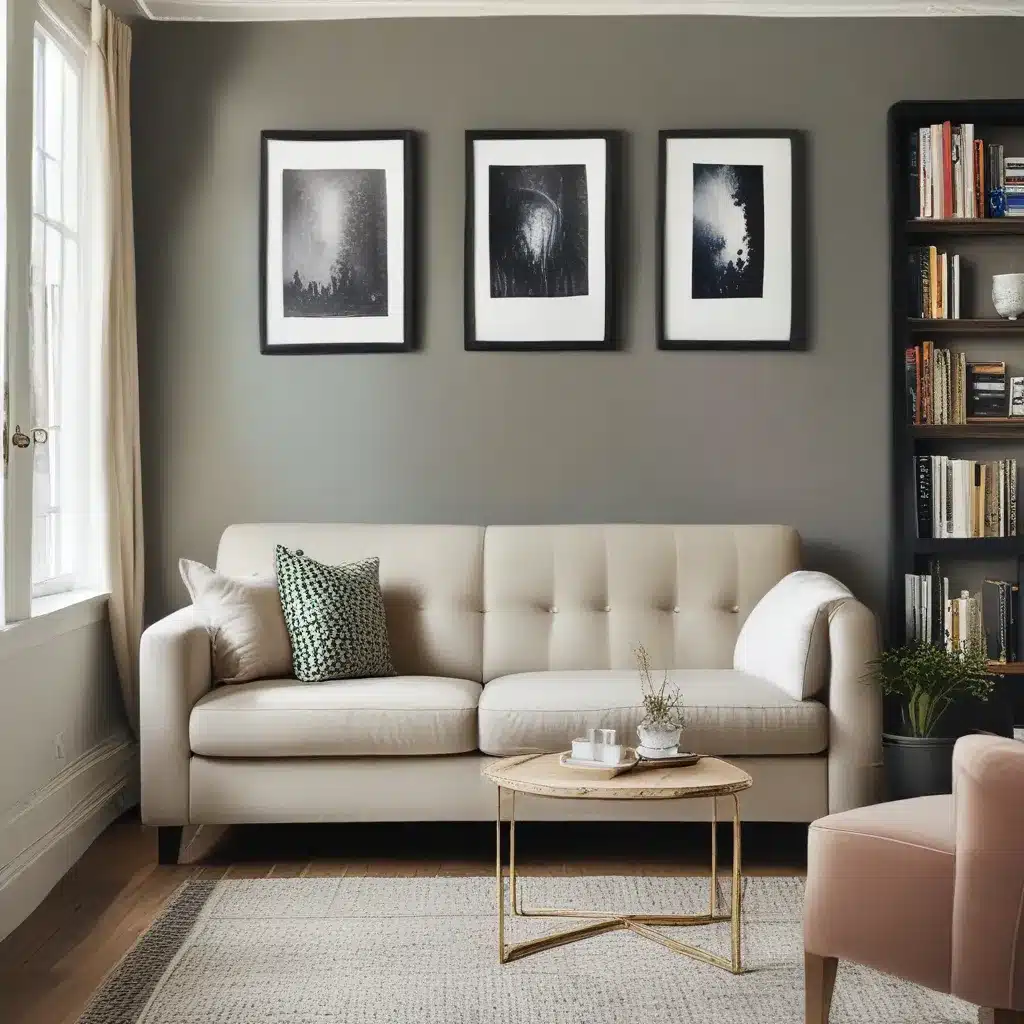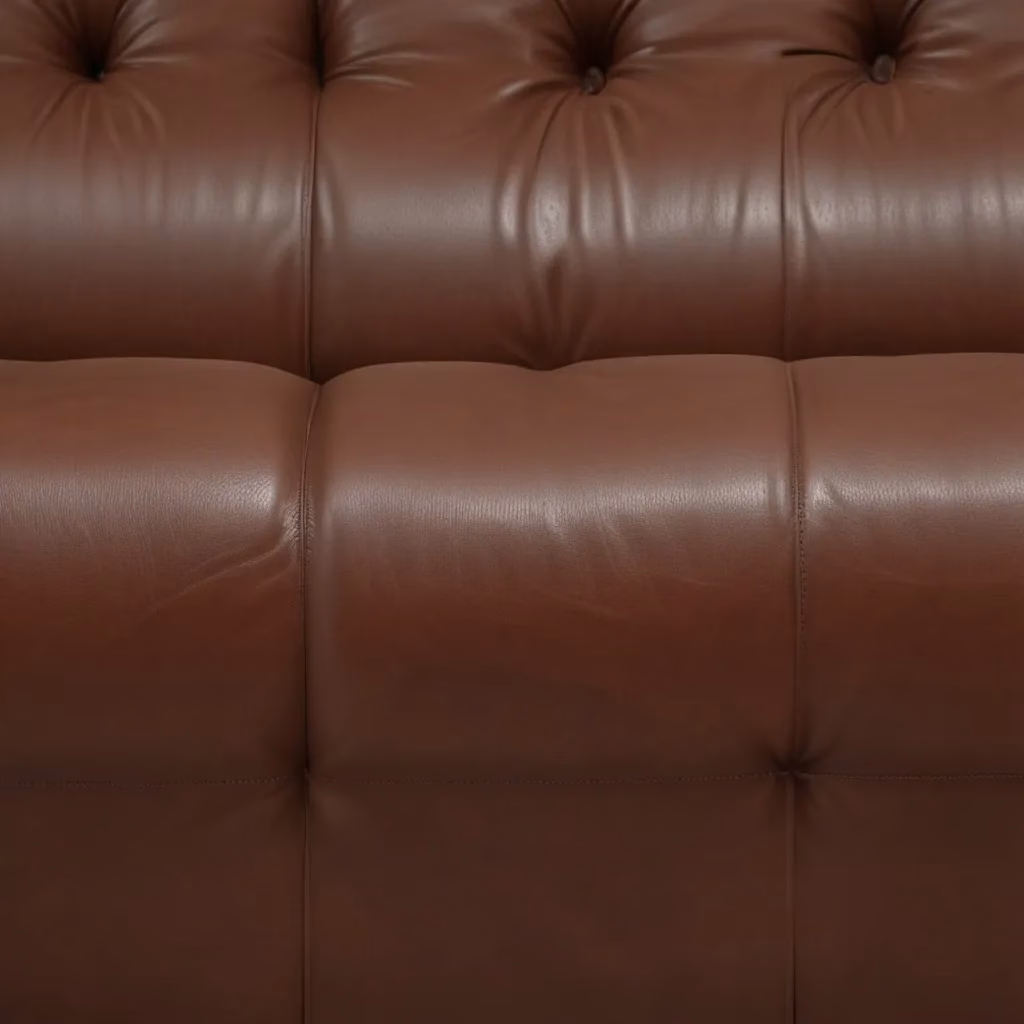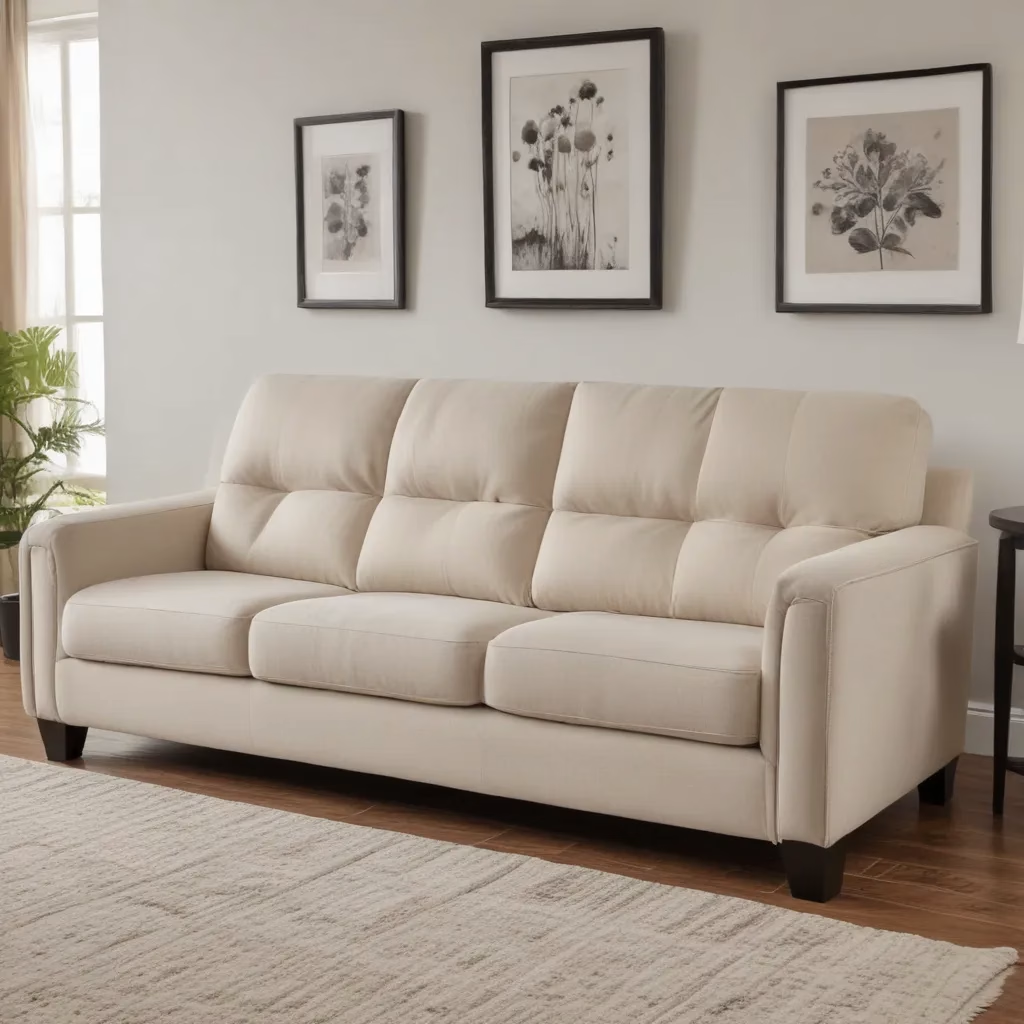Unveiling the Secrets of Spatial Illusion
Ah, the age-old dilemma – how to make a petite pad feel like a palatial palace? As someone who’s been in the interior design game for years, I’ve seen it all. From clients who swear their living room is “just a touch on the small side” to those who insist their bedroom is downright claustrophobic, the struggle is real. But fear not, my design-savvy friends, for I’m about to share some tricks of the trade that will have your cozy abode feeling downright spacious in no time.
Sofa Shenanigans: The Key to Conquering Cramped Quarters
Let’s start with the centerpiece of any living room – the sofa. Now, I know what you’re thinking, “But Michael, how can a big ol’ couch make my space feel bigger?” Well, my friends, it’s all about illusion. You see, the right sofa can actually create the perception of a larger room, and I’m about to let you in on the secrets.
The Minimalist Approach: Less is More
One of the biggest mistakes people make when trying to maximize a small space is going for the bulky, overstuffed sofa. Sure, it might look cozy, but it’s also going to make the room feel cramped and claustrophobic. Instead, opt for a sleek, minimal design. Apartment Therapy suggests choosing a sofa with clean lines and a low profile, as this can help visually expand the space.
Legs Up: The Elevating Effect
Another secret weapon in the battle against cramped quarters? Sofa legs. That’s right, the humble sofa leg can be your new best friend when it comes to making a small space feel bigger. By choosing a sofa with visible, elevated legs, you create the illusion of more open space beneath the furniture, which can make the room feel lighter and airier.
Embrace the Slipcovered Sofa
Now, I know what you’re thinking – slipcovered sofas are for grandmas, right? Wrong! These versatile pieces can be a game-changer in a small space. By opting for a slipcovered sofa, you can create a seamless, unified look that blends the furniture into the surrounding walls, making the room appear larger. Plus, you can easily swap out the covers to switch up the style whenever the mood strikes.
Mirrors, Mirrors on the Wall: Reflecting on Spatial Illusion
Ah, the good old mirror trick – a classic in the world of interior design. But did you know that mirrors can do more than just make you feel fabulous? They can also be the key to creating the illusion of a larger space. Apartment Therapy suggests strategically placing mirrors across from windows or other architectural elements to create the perception of depth and dimension.
The Mirrored Coffee Table: Doubling the Delight
Speaking of mirrors, have you ever considered a mirrored coffee table? Now, I know what you’re thinking – “But Michael, won’t that just make the table look even bigger?” Not to worry, my friends. Mirrored coffee tables can actually work wonders in a small space. By reflecting the surrounding area, they create the illusion of a larger, more open room. Plus, the sleek, reflective surface adds a touch of glamour that can elevate the entire space.
The Wall of Mirrors: The Expansive Effect
If you really want to go all-out, consider creating a wall of mirrors. Now, I know what you’re thinking – “Isn’t that a bit much?” But hear me out. By covering an entire wall with mirrors, you can create the illusion of depth and dimension that can make even the smallest of rooms feel positively palatial. Just be sure to balance out the mirrored wall with other design elements to avoid a “fun house” effect.
Lighting Up the Illusion: Brightening Up Small Spaces
Alright, let’s talk about lighting – because let’s be real, no matter how much spatial trickery you employ, a dark and dreary room is never going to feel truly spacious. That’s where strategic lighting comes into play.
The Luminous Lift: Bright Bulbs, Bigger Rooms
One of the easiest ways to make a small space feel bigger? Amp up the lighting. Quora suggests using bright, airy bulbs that can help create the illusion of a larger, more open room. And don’t be afraid to layer your lighting, with a mix of overhead fixtures, table lamps, and even strategically placed wall sconces.
The Reflective Reveal: Mirrored Lighting Fixtures
Speaking of lighting, have you ever considered mirrored lighting fixtures? Much like the mirrored coffee table we discussed earlier, these reflective beauties can work wonders in a small space. By bouncing light around the room, they create the perception of depth and dimension, making the space feel larger and more open.
The Luminous Illusion: Lighting Up the Corners
And let’s not forget about those pesky corners – those shadowy, neglected areas that can make a room feel, well, a little claustrophobic. But fear not, my friends, for strategic lighting can work its magic even in the darkest of corners. By placing lamps or sconces in the corners of the room, you can create the illusion of a larger, more open space.
Embracing Color and Contrast: The Palette Paradox
Now, I know what you’re thinking – “Michael, you’ve talked a lot about illusion and trickery, but what about color? Surely that plays a role in making a small space feel bigger, right?” Well, my friends, you’re absolutely right. Color and contrast can be powerful tools in the quest for spatial expansion.
The Dark Horse: Painting Walls in Rich, Moody Hues
Wait, what? Painting the walls in dark colors to make a small room feel bigger? Hear me out. As Michael Helwig Interiors explains, using a deep, rich color on the walls can actually create the illusion of depth and dimension, making the room feel larger and more expansive. The key is to balance the dark walls with light, airy furnishings to create a striking contrast.
The Light Brigade: Embracing Bright, Reflective Tones
Of course, the classic approach to making a small space feel bigger is to keep the walls light and bright. And there’s a good reason for that – lighter colors reflect more light, creating the perception of a more open and airy environment. But don’t be afraid to get a little creative with your palette. Experiment with soft, muted tones or even a touch of metallic to add depth and dimension to the space.
The Contrast Conundrum: Blending Hues for a Bigger Feel
And let’s not forget the power of contrast. By strategically pairing light and dark hues, you can create the illusion of depth and dimension that can make a small space feel larger than life. Think about it – a dark accent wall against a light, neutral backdrop can make the room feel positively palatial. Or, as Michael Helwig Interiors suggests, try painting the walls in a deep, rich color and using light, airy furniture to create a stunning contrast.
Bringing It All Together: Crafting the Illusion of Space
Alright, let’s recap – we’ve explored the power of the sofa, the magic of mirrors, the luminous effects of lighting, and the transformative potential of color and contrast. But how do we bring it all together to create the illusion of a larger-than-life space?
Well, my friends, it’s all about balance and harmony. By carefully curating your furniture, lighting, and color palette, you can create a cohesive, visually stunning environment that feels both cozy and spacious. And don’t be afraid to get a little creative – a mix of textures, patterns, and unexpected design elements can add depth and dimension to even the smallest of rooms.
So, if you’re ready to transform your cozy abode into a palatial paradise, head on over to Sofaspectacular and start browsing their stunning collection of custom sofas. With the right pieces and a little bit of spatial trickery, you’ll be well on your way to creating the illusion of a larger-than-life living space.




